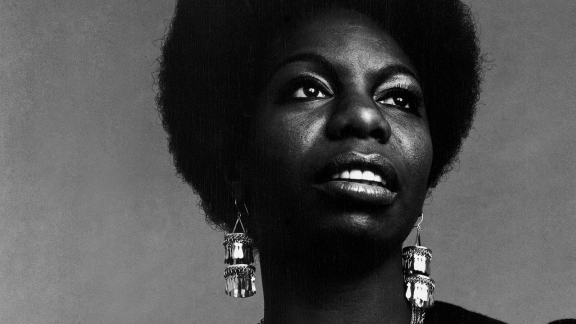By Martin Castro (The Cascade) – Email
One of the newest documentaries produced for Netflix, What Happened, Miss Simone? focuses on the titular artist Nina Simone and her fight for not just creative autonomy, but also against racism and a deteriorating mental condition — for freedom, in the truest sense of the word.
“What’s ‘free’ to you?” a reporter asks Simone in 1968, after she says that she only feels free on stage.
“Same thing it is to you. You tell me,” she jokes. Then after a moment of silence, she answers the question: “It’s just a feeling. It’s like, how do you tell somebody how it feels to be in love? How are you going to tell anybody who has not been in love how it feels to be in love? You can describe things but you can’t tell them, but you know it when it happens.”
Later she reaches a definition: “I’ll tell you what freedom is to me: no fear.”
Directed by Liz Garbus, What Happened, Miss Simone? covers Nina Simone’s upbringing and her role as a black icon, an almost militant vocalist. The documentary incorporates recorded interviews, splicing Nina’s voice with video interviews of her contemporaries to paint a picture of the singer’s life. And generally, Nina’s life was spent fighting.
“People seem to think that when she went out on stage she became Nina Simone. My mother was Nina Simone 24 / 7, and that’s where it became a problem,” Lisa Simone Kelly, Nina’s daughter, says as she recalls her mother’s combative life. “When the show ended, everybody else went home. She was still fighting.”
Having started her musical career as a classical pianist, Simone had to sacrifice her role as a mother so she could tour and have a life as a recording musician; according to the documentry, she would often get angry and lash out at people, be it her manager or the crowd itself. “I just want them to listen to the music like they did in the classical world,” she says in a recording. “I thought they needed teaching. If they couldn’t listen, fuck it!”
More than anything, Nina felt dissatisfaction with the conditions in America, and anger. She let that anger out through her music, although that’s not the only outlet she thought of. “If I’d had my way, I’d have been a killer,” she says in an interview. “I would have had guns, and I would have gone to the South and gave them violence for violence, shotgun for shotgun.” Her husband (and manager) convinced her to dedicate herself to music, although he would later criticize it for being too confrontational.
The toll that this anger took on her was clear to Nina, and she addressed it: “Artists that don’t get involved in preaching messages probably are happier, but you see, I have to live with Nina, and that is very difficult.” We’re shown Nina’s journal throughout the documentary, and in it, we see a woman who’s tired of fighting everyone around her: “Through the years I’ve wasted away to almost nothing,” she writes. “Inside I’m screaming, ‘Someone help me,’ but the sound isn’t audible — like screaming without a voice.”
“Goddamn it,” Nina writes. “I could kill them all.”
The pressures of her own state of mind, abuse from her husband, as well as the stress of her own life took almost all of her, and twisted it into an indiscernible thing.
“When I was young,” she says, recalling her childhood, “I knew to stay alive.”
What Happened, Miss Simone? shows us just that: an artist, oppressed, and enraged by her oppression, singing not just to entertain, but to survive.



